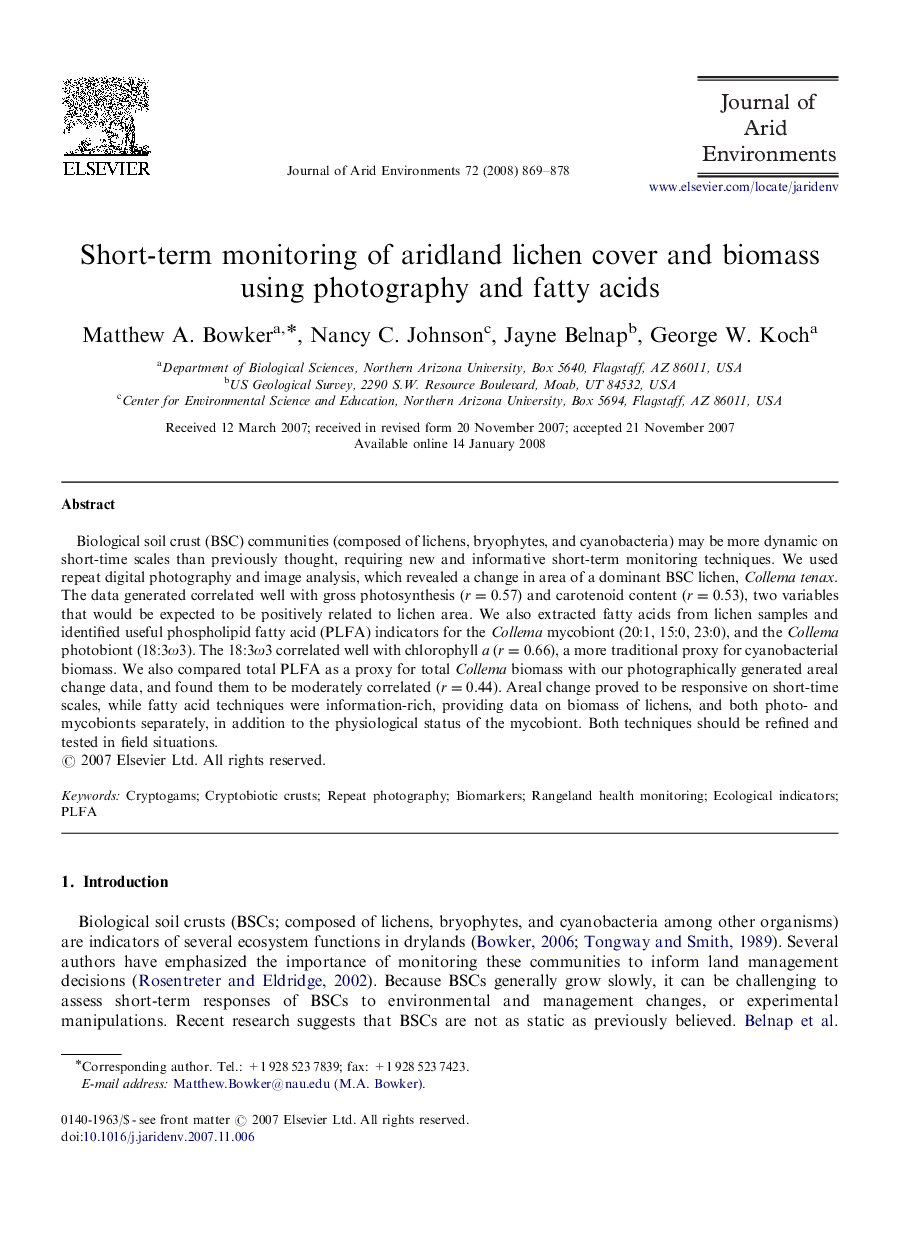| Article ID | Journal | Published Year | Pages | File Type |
|---|---|---|---|---|
| 4394255 | Journal of Arid Environments | 2008 | 10 Pages |
Biological soil crust (BSC) communities (composed of lichens, bryophytes, and cyanobacteria) may be more dynamic on short-time scales than previously thought, requiring new and informative short-term monitoring techniques. We used repeat digital photography and image analysis, which revealed a change in area of a dominant BSC lichen, Collema tenax. The data generated correlated well with gross photosynthesis (r=0.57) and carotenoid content (r=0.53), two variables that would be expected to be positively related to lichen area. We also extracted fatty acids from lichen samples and identified useful phospholipid fatty acid (PLFA) indicators for the Collema mycobiont (20:1, 15:0, 23:0), and the Collema photobiont (18:3ω3). The 18:3ω3 correlated well with chlorophyll a (r=0.66), a more traditional proxy for cyanobacterial biomass. We also compared total PLFA as a proxy for total Collema biomass with our photographically generated areal change data, and found them to be moderately correlated (r=0.44). Areal change proved to be responsive on short-time scales, while fatty acid techniques were information-rich, providing data on biomass of lichens, and both photo- and mycobionts separately, in addition to the physiological status of the mycobiont. Both techniques should be refined and tested in field situations.
